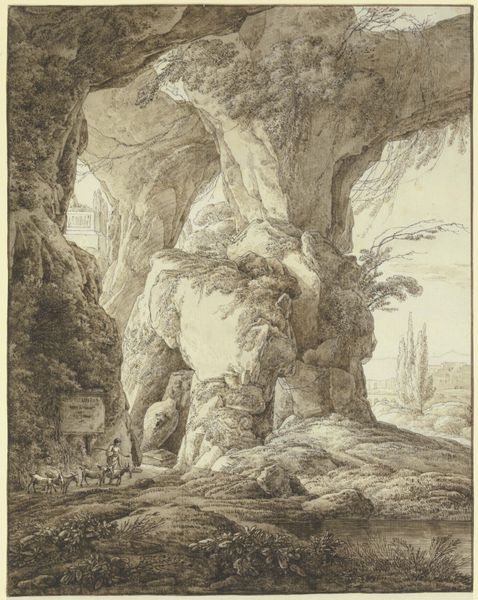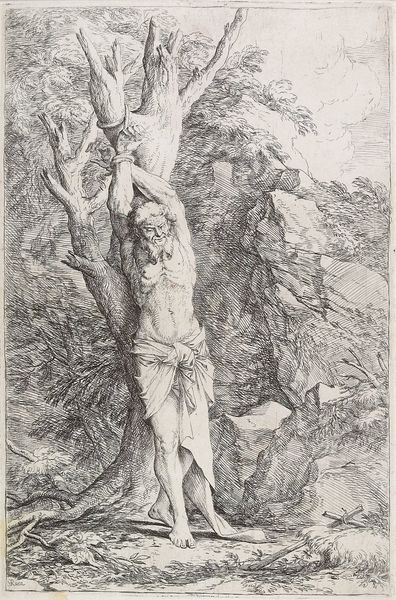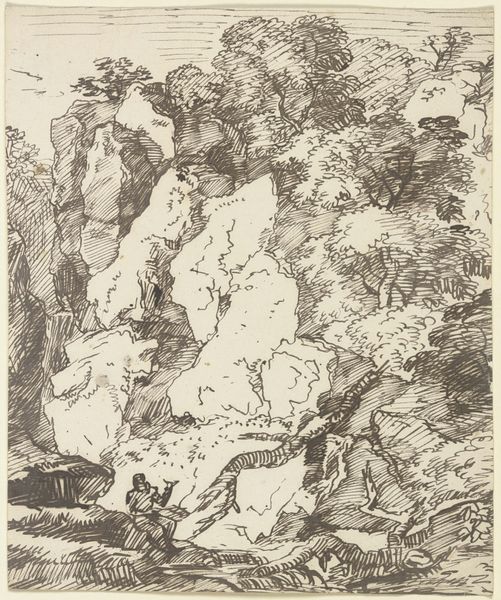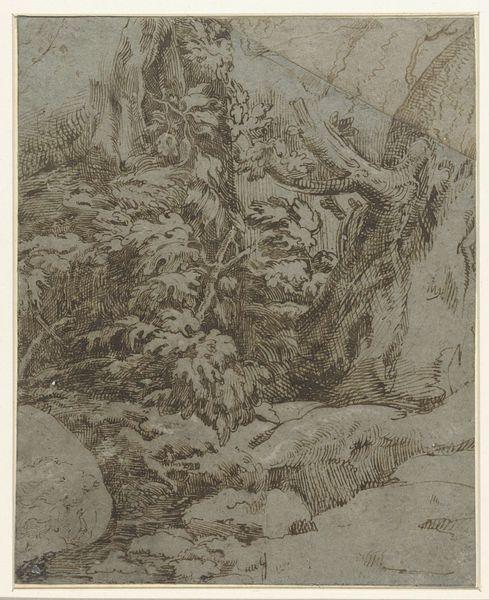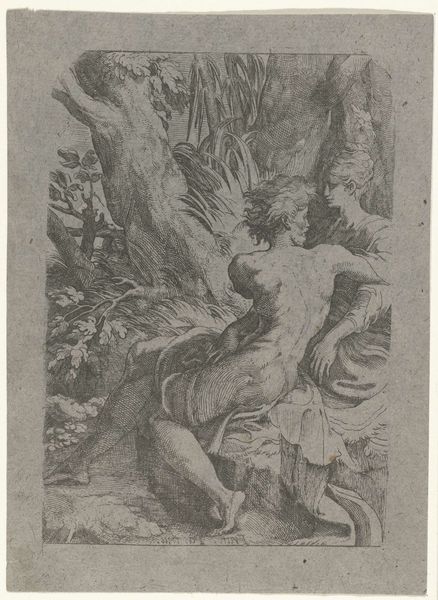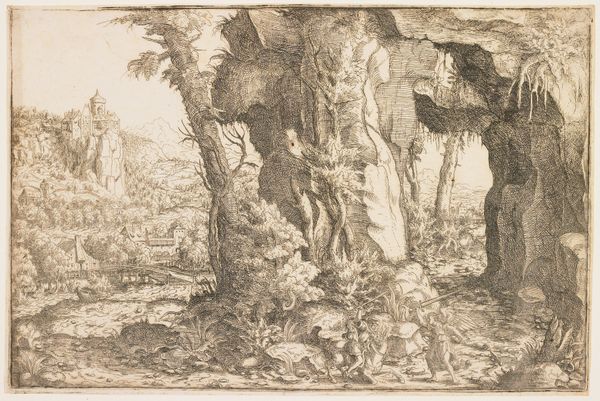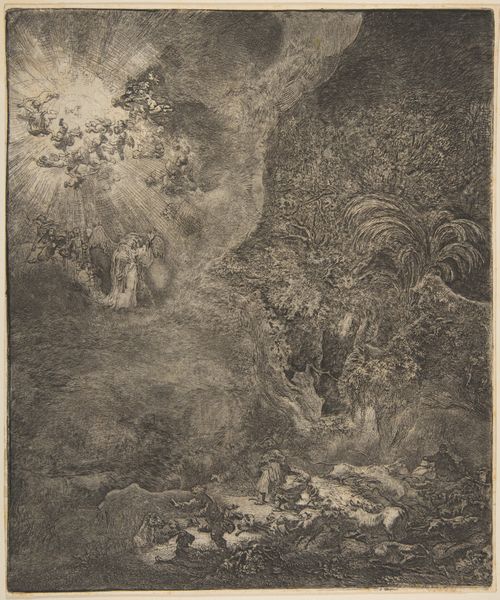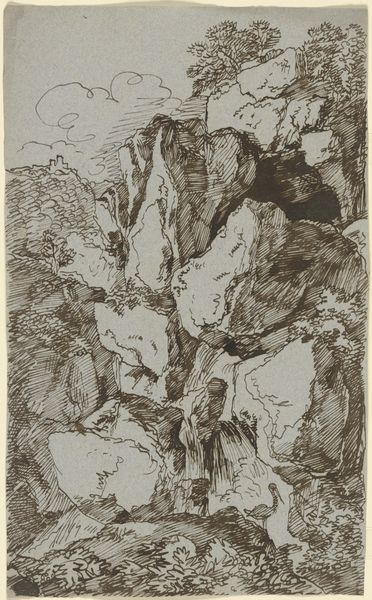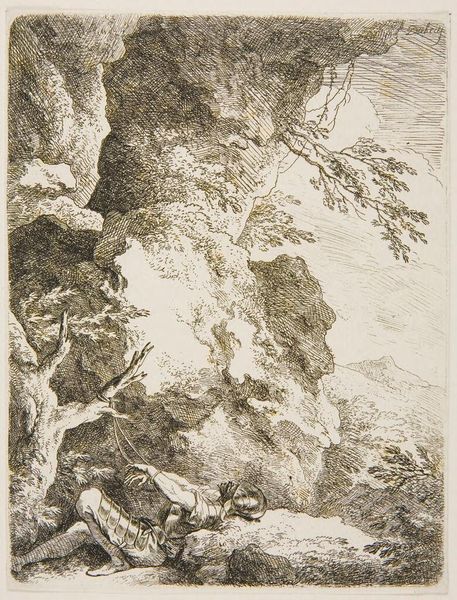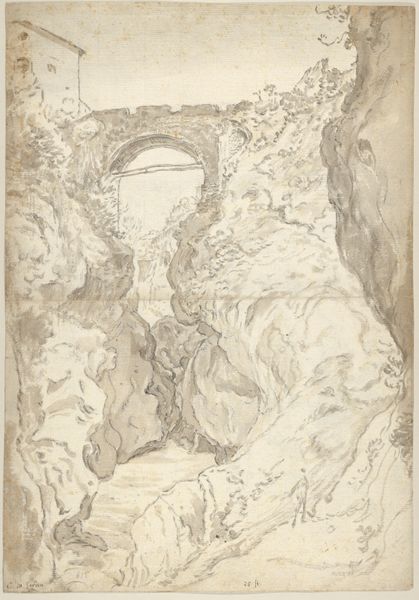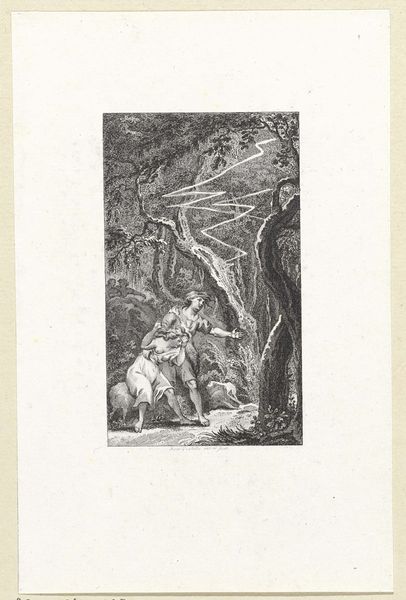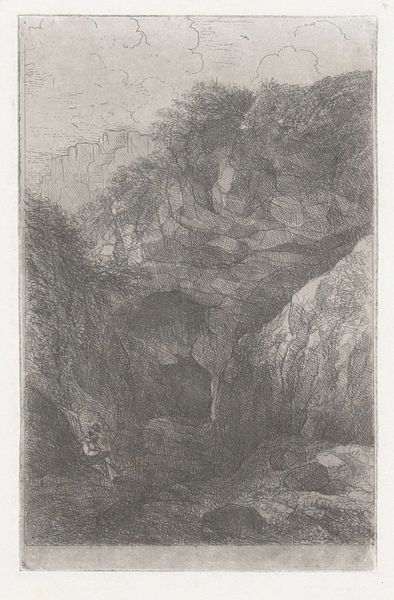
Discovery of the Bodies of Saint Peter and Saint Paul c. 1647 - 1751
0:00
0:00
drawing, print, etching
#
drawing
#
narrative-art
#
baroque
# print
#
etching
#
landscape
#
chiaroscuro
#
line
#
history-painting
Dimensions: 11 5/16 x 7 15/16 in. (28.73 x 20.16 cm) (plate)
Copyright: Public Domain
Curator: Look at this delicate etching, "Discovery of the Bodies of Saint Peter and Saint Paul," crafted by Giovanni Benedetto Castiglione, also known as Il Grechetto, sometime between 1647 and 1751. It's currently held at the Minneapolis Institute of Art. Editor: It's striking, almost dreamlike, the way the scene is rendered in these shades of grey. There’s a kind of ghostly pallor to the figures and a tangible solemnity hangs in the air. The lush landscape contrasting the stark figures presents quite a tension. Curator: Precisely! Castiglione was fascinated by narratives, often religious or mythological, and the interplay between light and shadow is characteristic of the Baroque style he worked within. Here, the dramatic chiaroscuro illuminates the bodies, contrasting sharply with the darker surroundings, amplifying the discovery’s significance. It plays into the theatricality prevalent in much Baroque art of this period. Editor: It definitely carries that heavy theatricality, but I'm curious about the discovery itself. Whose narrative are we centering by highlighting this finding? Were Saint Peter and Saint Paul not already venerated, and what power dynamics are at play by re-establishing their foundational presence in such a public manner? I see political undertones in this supposed religious relic. Curator: That’s a crucial observation. The Counter-Reformation certainly leaned into relics and dramatic depictions of martyrdom to solidify the Catholic Church's authority in the face of Protestant challenges. Locating their remains physically grounded their spiritual authority, bolstering institutional claims of legitimacy. Editor: So, it’s not just a simple scene; it's about claiming dominance, both religious and political. The idealized landscape is another form of artifice contributing to that same end. One almost expects angelic choirs in the heavens... were it not a black-and-white image, of course. Curator: I concur. And beyond the overt religious subject, Castiglione was known for his innovative etching techniques. Note the dynamic lines used to depict foliage. They showcase his technical virtuosity but also contribute to the scene’s overall emotional intensity. He skillfully manipulated the medium. Editor: Which adds an entirely new dimension to it, considering that printmaking opened religious imagery up to more populist viewing. These ideas around sacred leadership could, as a result, take stronger hold within a broad base. So the politics go beyond the canvas. Curator: It does provide broader access to such charged imagery. It highlights the powerful interrelation between art, religion, and the political theater of the era. Editor: Seeing it that way truly brings those dynamics to the foreground. It helps me contextualize this rediscovery as a kind of propagandistic resurrection for political purposes. Curator: Absolutely. Castiglione's "Discovery of the Bodies" gives us insight into 17th-century religious, political, and artistic discourse. Editor: It does – and I appreciate the prompt to ask questions of it!
Comments
No comments
Be the first to comment and join the conversation on the ultimate creative platform.
